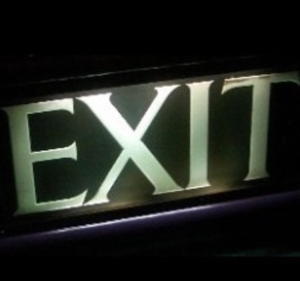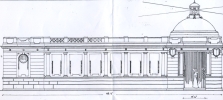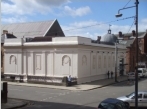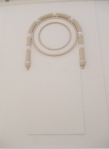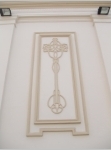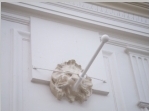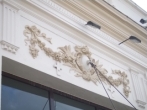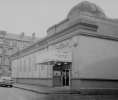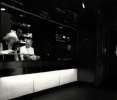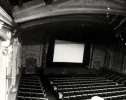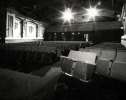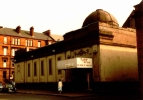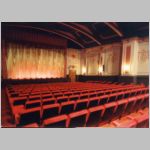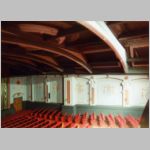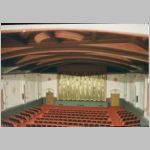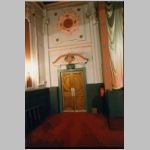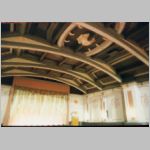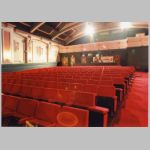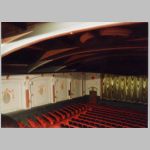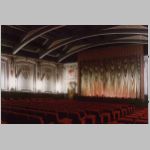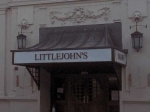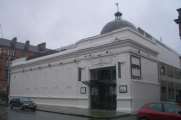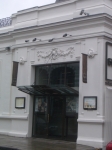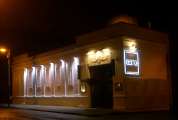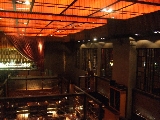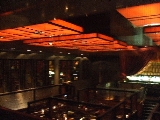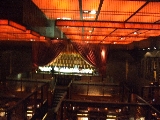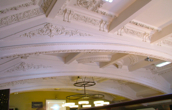Scottish Cinemas and Theatres
17 Vinicombe Street, Hillhead
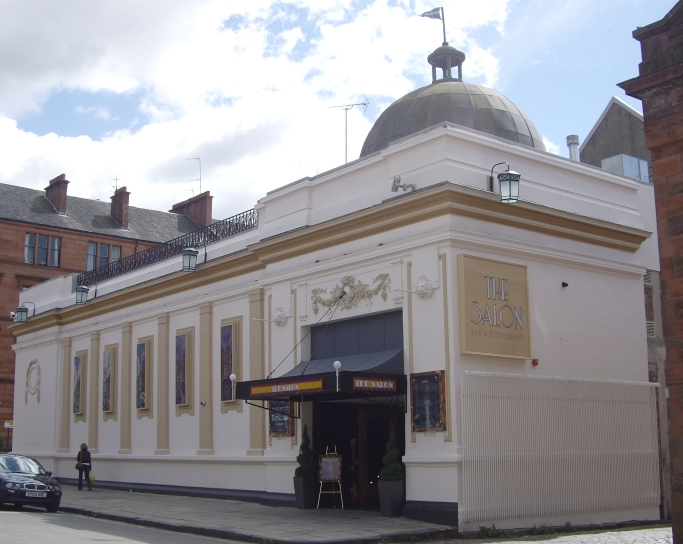
Extracts from the 1912 plans, which were clearly modified during building. Courtesy of Chris Doak.
The building is
therefore a rare early use of ferroconcrete framing (in order to be
fireproof), and the combination of this early exposed concrete
structure with marvellous fruite belle epoque plasterwork makes the
ceiling treatment and roof structure in particular very special indeed.
This construction method did not catch on for cinemas, despite its advantages,
because architects considered it slower than steel-based approaches
(the only other known cinema building that did use the same method was the
similarly-named Salon in Sauchiehall Street).
In
the aristocratic neighbourhood of Hillhead, we are to have a luxurious
picture house. It will be opened this month, and will be known as the
Hillhead Picture Salon. The site is in Byres Road at the Botanic
Gardens. Seating accommodation will be provided for 500 persons. The
building, which is nothing if not roomy, will be handsomely furnished.
A pretty colour-scheme of rose de barry and blue has been adopted. The
architect is Mr George M Brand. The best pictures the world can supply
will be projected in the most up-to-date fashion. Mr Herr Iff's
celebrated orchestra will provide the music, an attraction in itself.
- The Entertainer and Scottish Kinema Record , October 4th, 1913, p14 One of the first suburban cinemas in Glasgow, the Hillhead Salon was also notable for housing a full orchestra, and for serving tea and biscuits to its patrons during the afternoon! Until 1914 and the outbreak of war, the orchestra was conducted by Herr Iff, and the prices of admission were 6d for the front stalls, 9d for the rear, and a shilling for the balcony. When the Booth family ran the Salon, the entrance was wood panelled, and the ticket machine was electric - you pressed a button for one or however many tickets were required, and a motor whirred and ticket came out. Upon opening the wooden doors with scrolled brass handles, a velvet curtain on a brass tubular rail fixed on the barrier behind the back row of stalls seats was revealed. In the centre of the auditorium ceiling there was an oval house light, and on the side walls in the middle of the plaster work panels were lights with shades with a 3D hexagonal shape with black lines round them - in the 1950s these were still gas lights, and the doorman went round with his pole to dowse them just before the main lights went up and the National Anthem was played. In front of the stage there was an orchestra pit with the rail sloping up from the centre, and at the at outer sides of the rail there were big round ball lights.
Photos from 1982, courtesy of the Scottish Screen Archive at National Library of Scotland
To get to the projection room you had to go in through the Gents toilet door and turn right. All this was altered when it was done up in the 1970s, when Westrex projection and sound equipment were put in - two projectors then changed to a single projector with tower, and Xenon and transistor sound. Until the 1960s, the Salon was paying the next-door Western Baths £200 a year to provide steam for its heating, and had cause to complain several times of insufficient supply! The Salon sold books of five tickets at a discount over the full price - this was a good deal, especially for students.
The photos below were taken in 1990 (courtesy Bruce Peter), and show the stunning interior after being redecorated by CAC, who also installed a new screen - the original proscenium was by this time hidden by the later cinemascope screen.
The Salon closed suddenly on 12th October 1992, when staff turned up for work to find themselves locked out. Despite a huge public outcry and campaign to re-open it as a cinema, it remained derelict until it was converted into a Littlejohn's Restaurant in November 1999. Littlejohn's closed for refurbishment in April 2001, shortly after being purchased (along with the nearby Grosvenor Cinema) by the Glasgow-based G1 Group - click here for more pictures of the Salon after closure as Littlejohn's Restaurant. The building re-opened as the Gong Bar/Restaurant on 6th October 2001. This refurbishment had installed a new lowered, neon ceiling, hidden most of the original features inside, and added 2 separate mezzanine levels inside the shell, as well as opening up a new window into the balcony where the canopy used to be. The bar at the rear occupied the space of the original balcony, with a flat floor and accessed via a new central stair. A similar raised bar area was at the screen end, with the raked stalls floor levelled.
In August 2006, G1 Group filed a new planning application to further alter the building, by replacing the Glasgow-style art nouveau panels on the exterior with similar designs in back-lit glass, to open out the entrance vestibule by removing the modern glass doors, to insert three sky-lights in the ceiling to get more light into the building, and to extend the balcony level right across to the screen, creating an additional 60 square metres of floorspace for the restaurant. In 2008, Historic Scotland upgraded the listed status of the building to Category A - the highest possible level, in view of its unique architectural importance. 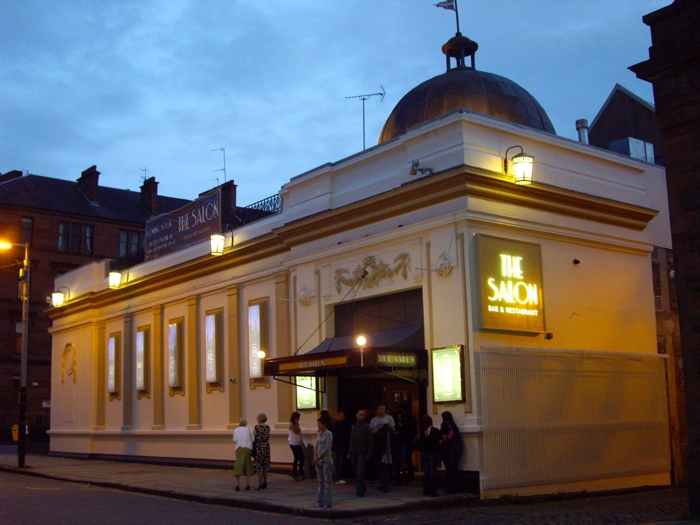
References Official Gong/Salon website Original Plans, Mitchell Library Ref. B4/12/1912/329 A Hillhead Album, Morton, 1973, p93 Along Great Western Road, Urquhat, 2000, p185 100 Years of Glasgow's Glorious Cinemas, Peter, 1996, p111 Buildings of Scotland: Glasgow, Williamson, Riches, Higgs, 1990, p353 Cinemas of Cinema City, Louden, 1983, p70 The Glasgow Story website, Salon page Klondyke of the Cinema World, Doak, 1979, Fig 34 Cinemas in Britain, Richard Gray, 1996, p27 Cathedrals of the Movies, Atwell, 1981, p30 Story of the Western Baths Hillhead, Mann, 2000, p43 Thanks to Frank Watson and Jim Mitchell for their memories of the building. |
Unless otherwise
specified, all photographs and other material copyright (c) 2001
- 2020 Gordon Barr and Gary Painter.
All rights reserved. Permission for use elsewhere normally granted, but please ask first!
No attempt is made to infringe any existing copyrights or trademarks. Please contact the editors in case of any queries.
All rights reserved. Permission for use elsewhere normally granted, but please ask first!
No attempt is made to infringe any existing copyrights or trademarks. Please contact the editors in case of any queries.
